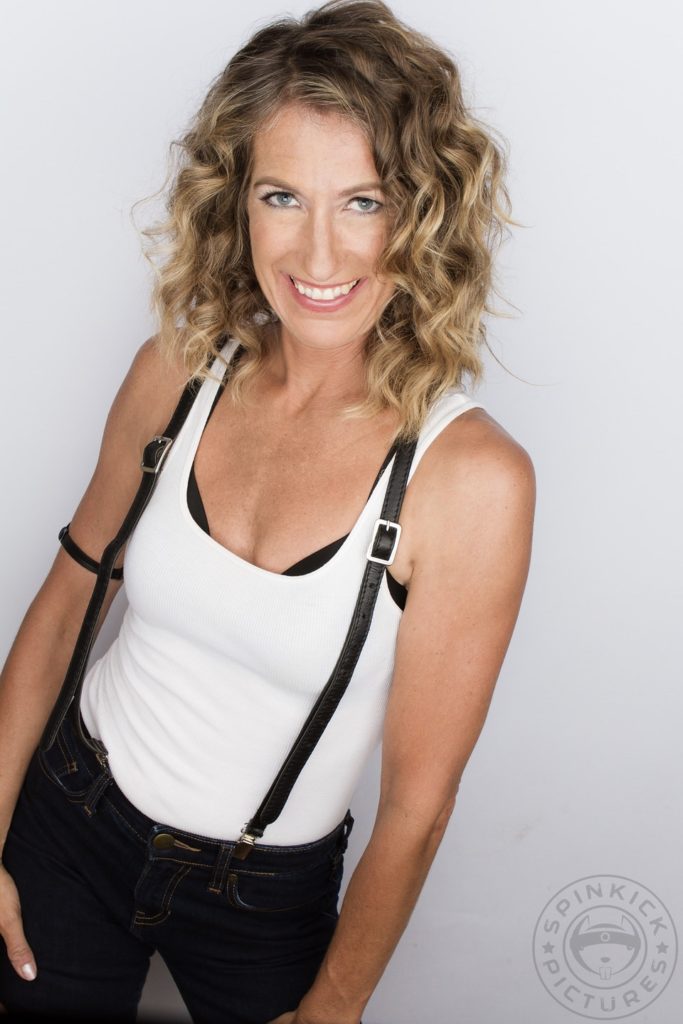
In contemporary teacher Shelly Hutchinson’s jumps and turns classes at Broadway Dance Center in New York City, she often asks her students to find their “million-dollar jump.” “Where’s the jump that’s going to make you rich? Where’s the jump that’s going to make you believe in yourself?,” she asks.
That’s because, for Hutchinson, jumping high is as much about mindset as it is about strength and mechanics. “A lot of us just need to remember how to encourage ourselves to get off the floor,” she says. “And not to frame it as something that’s really hard.”
Here’s how Hutchinson gives her dancers the confidence—and the skills—to find more height in their jumps.
Create a Positive Environment
“When I start my classes, I come in with super-high energy and a lot of positivity and light, and so I try to get my class to feel like that for 90 minutes,” says Hutchinson. She encourages positive self-talk throughout class, especially during jumps, where she’ll ask students to give themselves an affirmation as they jump, or to think about their proudest moment. “It gets us back to remembering that we’re capable,” she says. “We want to really believe that we can fly.”

Prep Dancers Accordingly
To prepare students for expansive, powerful jumps, Hutchinson emphasizes moving as big as possible from the very beginning of class. She also focuses on the feet during her warm-ups, helping dancers find their heels in plié so that they can push off them when it’s time to jump: “The heel is a strong platform, and it’ll help us connect to the hammies [hamstrings], glutes and inner thighs.” To prepare dancers to roll through their feet, she has them move through demi-pointe to full pointe to pushing all five toes off the floor, “because that’s how we’ll pick up our feet eventually” in jumps.
Focus on Height First
Hutchinson encourages dancers to aim for height first, then add everything else. “I can’t get my legs straight, turn them out, stretch my ankle and get my shoulders down, until I have height off the floor,” she says. “So first, let’s get as high as we can, and then we’ll have all that time in the air where we can do those things,” adding that focusing on technically perfect jumps often keeps dancers from reaching their full height. Hutchinson structures her across-the-floor series with this in mind, asking dancers just to think about height on their first pass, then adding a focus on additional elements (like lengthening the legs or stretching the feet) with each subsequent pass.
Hutchinson likes to start with simple jumps that allow dancers to get height. “We do our deepest work when we don’t have to think too much about coordinating the movement,” she says. Tuck jumps are a favorite—”It’s easy to go ‘OK, this is how I get my pelvis and my head and my knees and my toes and everything up at the same time’”—as are grand jetés and side leaps in second.

Use Images That Resonate
Hutchinson finds that pedestrian, task-focused images (like jumping over a puddle, dunking a basketball or reaching a stack of money on the roof) helps dancers tap into their natural jumping power without getting too much in their heads. She also talks to dancers about projecting out over the horizon as they jump, which can help not only with the jump height but with performance quality. “As we get closer to whatever our set horizon is, it’s going to change,” she says. “That way it keeps you present.”





